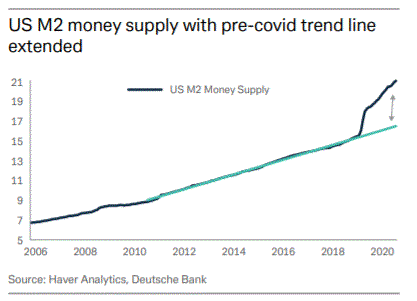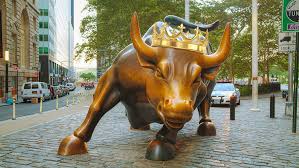Deutsche Bank går imod den generelle opfattelse blandt økonomer ved at pege på risikoen for overophedning af økonomien næste år – overalt i verden, men især i USA. Der er slet ikke udsigt til stagflation i 2022, for både væksten og inflationen vil være høj. Det skyldes centralbankernes lempelige pengepolitik under coronakrisen samt brugen af “helikopterpenge” for at stimulere økonomien, og effekten mærkes også i det nye år. Den økonomiske genopretning er sket langt hurtigere end efter finanskrisen i 2008-9. De fleste store industrilande vil få en vækst på omkring 3 pct. næste år. Omicron er den store usikkerhed, men der er snarere frygt for, at der kommer en recession i 2023 eller 2024, mener Deutsche Bank, der også mener, at centralbankerne må være parate til at gribe kraftigere ind næste år.
An overheating economy
While some commentators worry about stagflation in 2022, it is far more likely that the US economy will encounter overheating risks. Of course, many economies are still recovering from covid with the current winter wave plus Omicron providing obvious risks.
However, unless the new variant completely rewrites the path of the pandemic, next year should be a better year on the pandemic front. Meanwhile, the huge stimulus that remains in the system, alongside easy policy conditions, will continue to ensure both inflation and growth stay high.

The result is likely to be a “growth-flationary” environment in 2022. In turn, the Fed will likely become more aggressive in 2022 in order to curb inflation. This will tighten financial conditions for a period while investors become used to the new regime. Growth should survive this in 2022 as policy and financial conditions will likely stabilise at still accommodative levels as the adjustment takes place.
However, should the economy overheat, and the pace of tightening outweigh the historically easy level of financial conditions, the cycle’s end could be brought into sharper focus with a recession in 2023 or 2024 increasingly debated.
Indeed the starting point is that the spot real federal funds rate is now more negative than it has been at any time since the 1950s. Money supply has exploded in a way it did not after the financial crisis when the world was deleveraging and thus offsetting extreme monetary policy. A lack of deleveraging in this cycle and helicopter money has left a monetary overhang this time round that will continue to encourage high growth and inflation. Potential political gridlock after the mid-terms will not change the legacy fiscal stimulus still working its way through the system in 2022.
Overheating risks have been amplified by the recent change in the Fed’s attitude towards maximum employment. Maybe history will suggest that the Fed was unfortunate in its timing to move to average inflation targeting just as helicopter money finally arrived that removed the necessity for the policy change. It is arguably fighting the battle of the last cycle. By waiting to see actual gains in employment rather than respond to the clear labour market tightness, albeit exaggerated by the pandemic, it has arguably fallen too far behind the curve.
One of the biggest differences between this cycle and the last is the US output and employment gap. After the financial crisis both took eight years to close. That was the slowest recovery in history so with hindsight it is quite easy to see why we did not see inflation. In this cycle the gaps will close over the next quarter which will be one of the quickest recoveries in history. So the US economy will be bumping against its inflationary speed limit in 2022 with huge stimulus still working through the system.
Some argue that stagflation is a bigger threat than overheating. The reality is that most economies are still a long way from it. If DB’s growth forecasts prove correct, then most of the G7 economies will still generate economic growth of at least three per cent next year. This is some way above trend and inconsistent with ‘stagflationary’ dynamics.
We can therefore expect robust growth, and elevated inflation. This makes the overheating of the global economy a key risk in 2022. Consider that in 2021, investors went from not pricing in a hike until 2024 to expecting as many as three next year. The risk lies in central banks, led by the US, being forced enact yet more.




